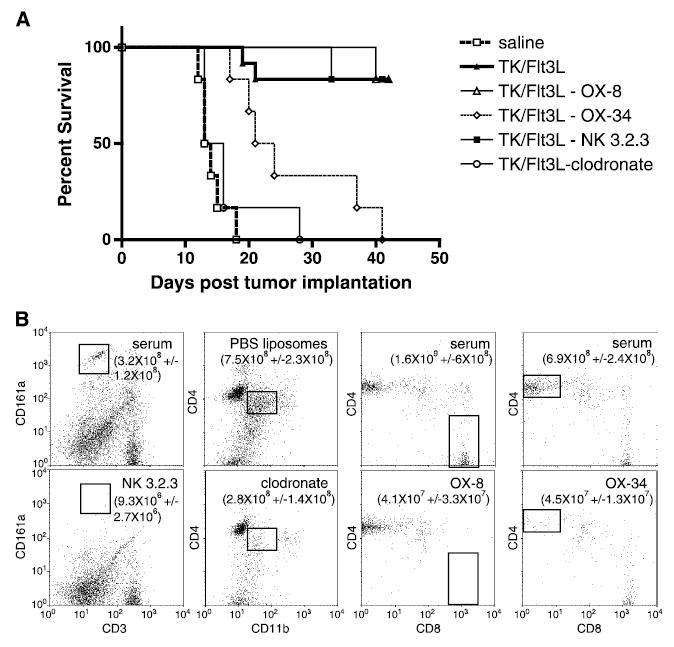Figure 5.

Depletion of specific subsets of immune cell alters therapeutic efficacy of RAdTK + Flt3L in macrophage and CD4+ cell–depleted animals. A, all animals were injected with 5,000 CNS-1 glioma cells. Nine days later, specific subsets of immune cells were depleted by i.p. injection of 1 mg OX-8, OX-34 or normal mouse serum, 0.5 mg of NK3.2.3, or 2 mL clodronate or PBS-filled liposomes (n = 6). Twenty-four hours following immune cell depletion, saline or RAdTK + Flt3L was intratumorally injected. A, Kaplan-Meier survival curve of all depleted animals (serum and PBS liposome, ▴; OX-8, ▵; OX-34, ⋄; NK3.2.3, ▪; and clodronate, ○) and control groups (saline treated, □). B, depletion efficiency and specificity was evaluated by flow cytometry in splenocytes from immune cell depleted or control animals seven days after depletion (n = 4). All samples were gated on lymphocyte populations by FSC and SSC. NK cells were identified as CD3, CD161a+. Macrophages were identified after gating CD45+ lymphocytes as CD4+, CD11b intermediate populations. CD4 cells were identified as CD4+, CD8−, and CD8 cells were identified as CD4−, CD8+ after gating respective populations for CD3+ lymphocytes. Numbers represent total number of a given cell population per spleen ± SE (n = 4).
